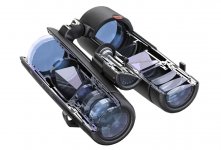tenex
reality-based
I just noticed this sentence about Noctivids on the Leica (US) website:
"Thanks to the modification of the radii at the lens surfaces, the sharpness towards the periphery of the field of view has been improved significantly."
This really has to mean an aspheric element, doesn't it? They label their camera lenses ASPH all the time, and boast about it. Why don't they for binoculars? And is this the first time a Leica bino has had it? How many others now do? I really don't see the word used in marketing. Instead we get... "plasticity".
(Not even contemplating a Noctivid myself, just curious about optical technology...)
"Thanks to the modification of the radii at the lens surfaces, the sharpness towards the periphery of the field of view has been improved significantly."
This really has to mean an aspheric element, doesn't it? They label their camera lenses ASPH all the time, and boast about it. Why don't they for binoculars? And is this the first time a Leica bino has had it? How many others now do? I really don't see the word used in marketing. Instead we get... "plasticity".
(Not even contemplating a Noctivid myself, just curious about optical technology...)






